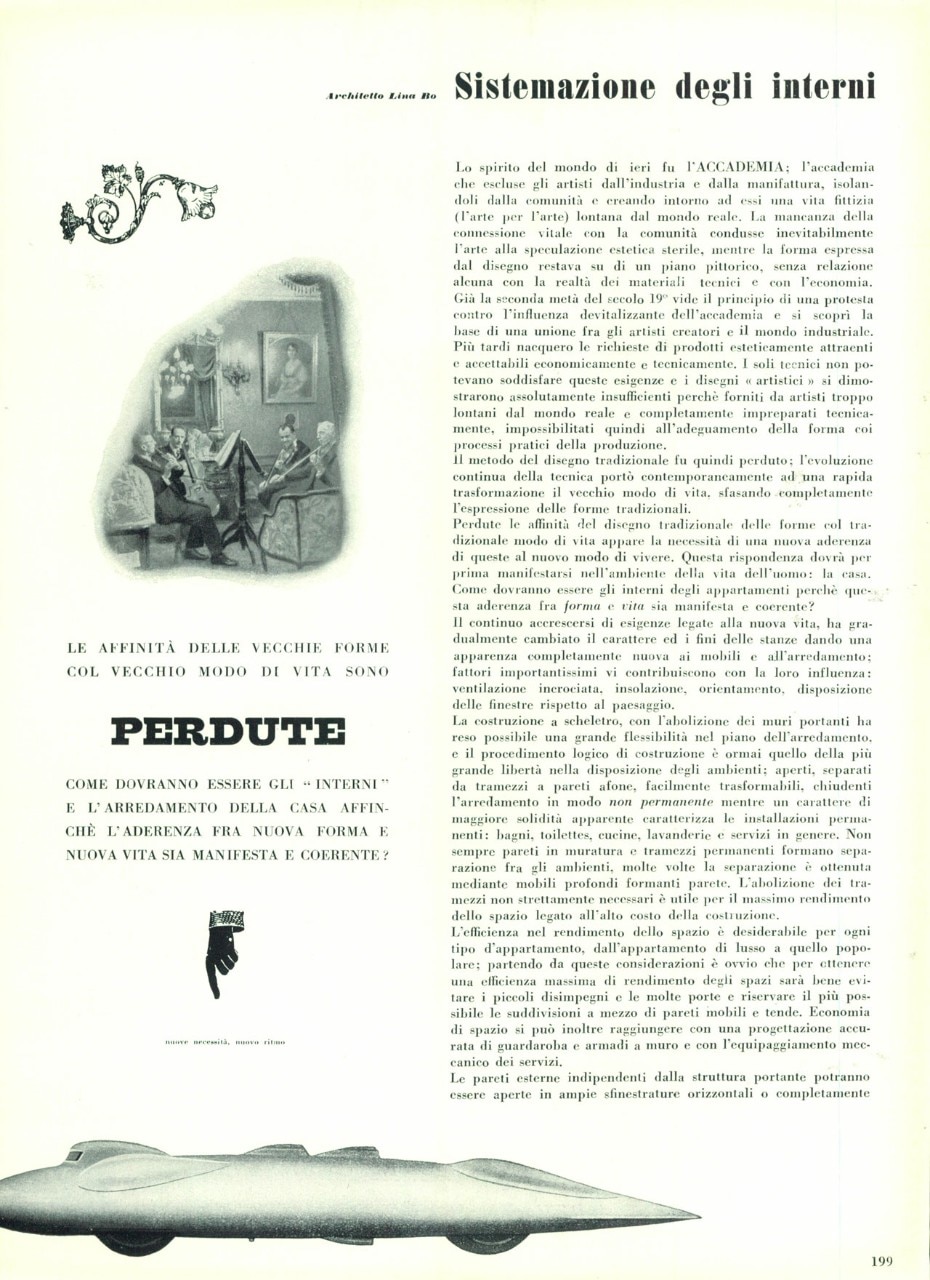
The second half of the 19th century had already witnessed the beginnings of a protest against the devitalizing influence of academia, revealing the basis of a union between creative artists and the industrial world. Later, a demand arose for aesthetically attractive and economically, technically acceptable products. Technicians alone, however, could not satisfy these needs, while “artistic” designs also proved absolutely insufficient; for they were supplied by artists who were too far removed from the real world and were technically completely unprepared. So they were quite unable to adjust form to the practical processes of production.
The traditional method of designing was therefore lost, while the evolution of technology led simultaneously to a rapid transformation of the old way of life and upset the expression of traditional forms.
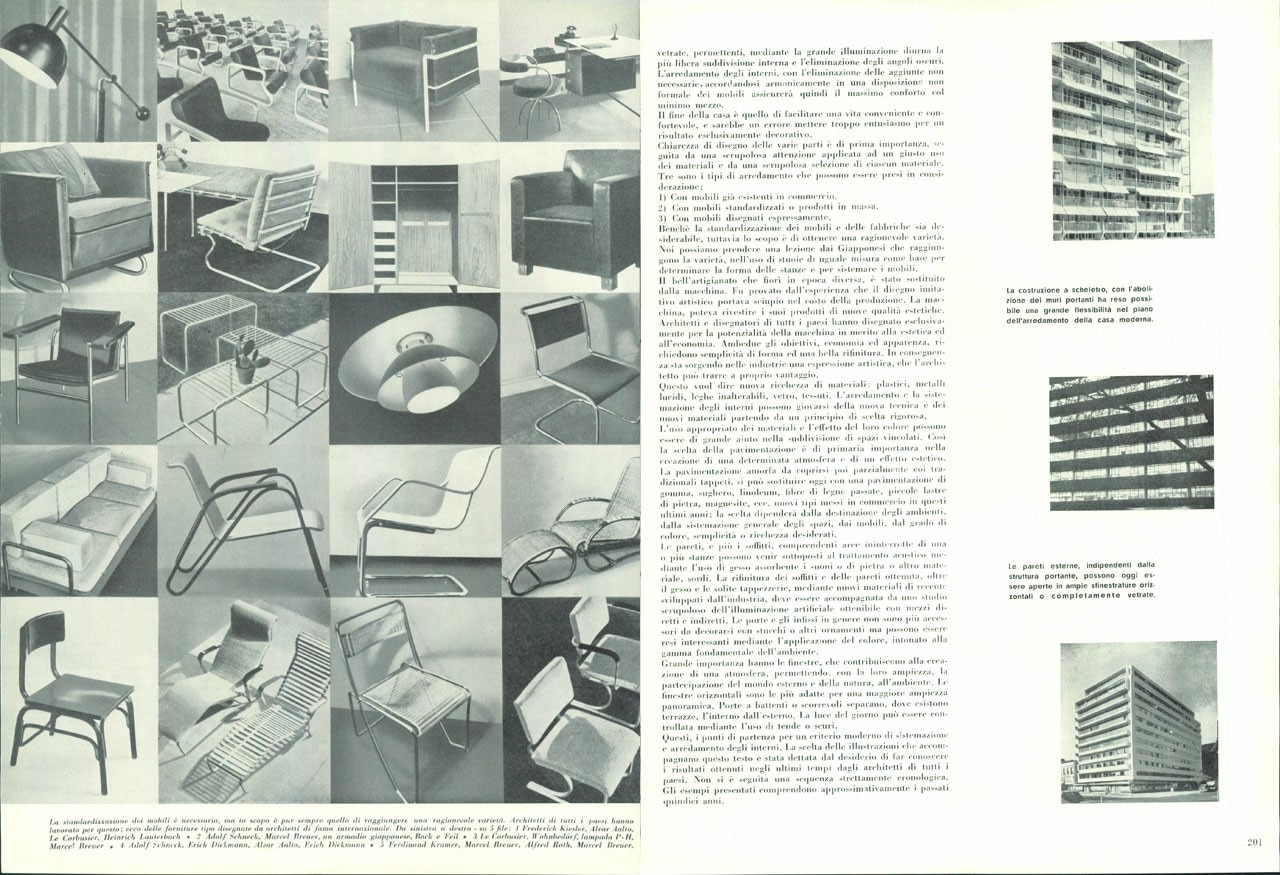
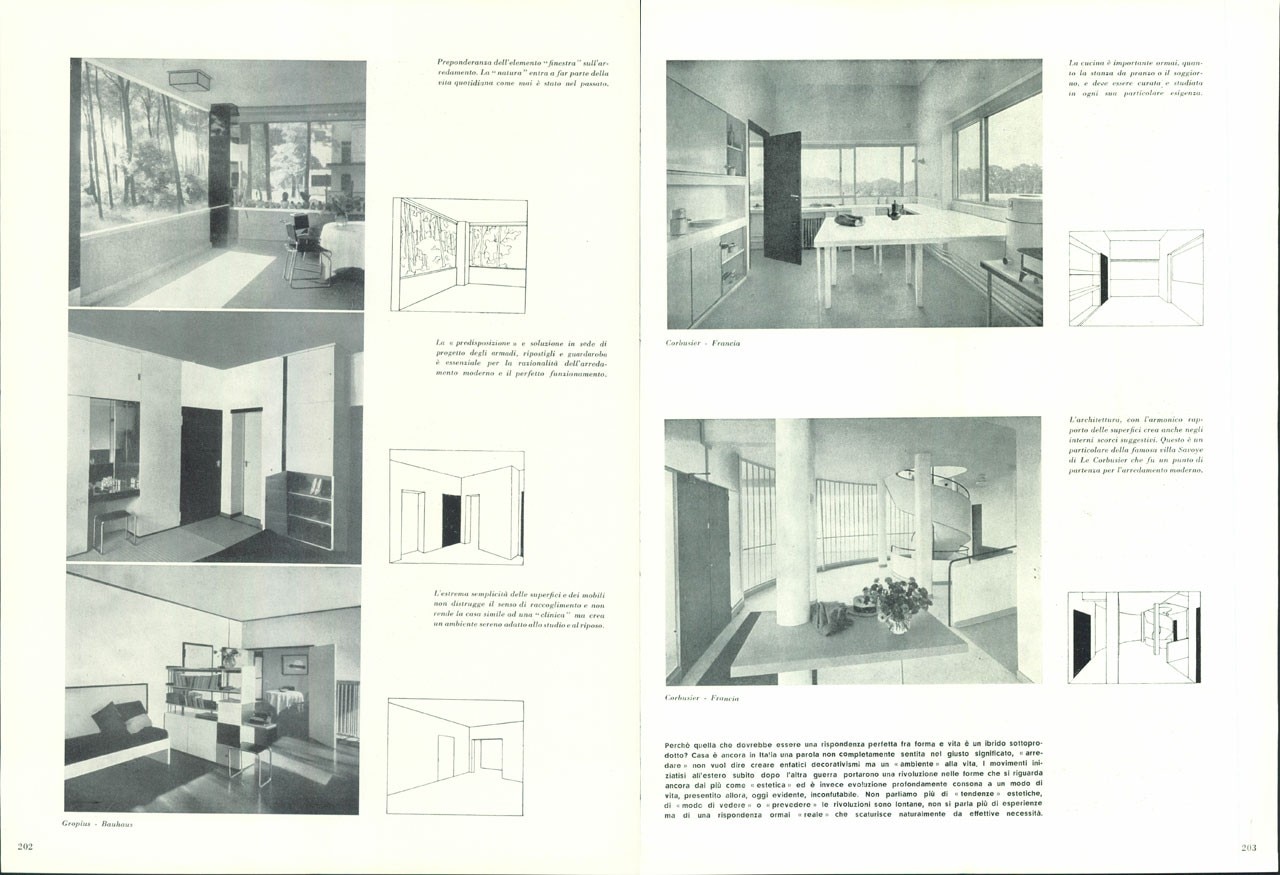
The growing demands associated with today’s new life have gradually changed the character and purposes of rooms, giving a completely new appearance to their furniture and design. Major factors have influenced these changes, such as crossed ventilation, insulation, orientation and the relating of windows to landscape.
Skeleton construction frames and the abolition of bearing walls have ushered in a greater flexibility of interior design; the logical process of construction is by now aimed at the greatest freedom of interior space; open, or separated by easily convertible sound-resistant partition walls. Interiors can be temporarily closed off, whereas the permanent fixtures are more solid-looking: bathrooms, toilets, kitchens, laundry-rooms and services in general. Rooms are no longer necessarily separated by brick walls and permanent partitions; very often the separation is achieved by means of deep furniture that in itself creates a wall. The abolition of not strictly necessary partitions helps to maximize the cost-effectiveness of space.
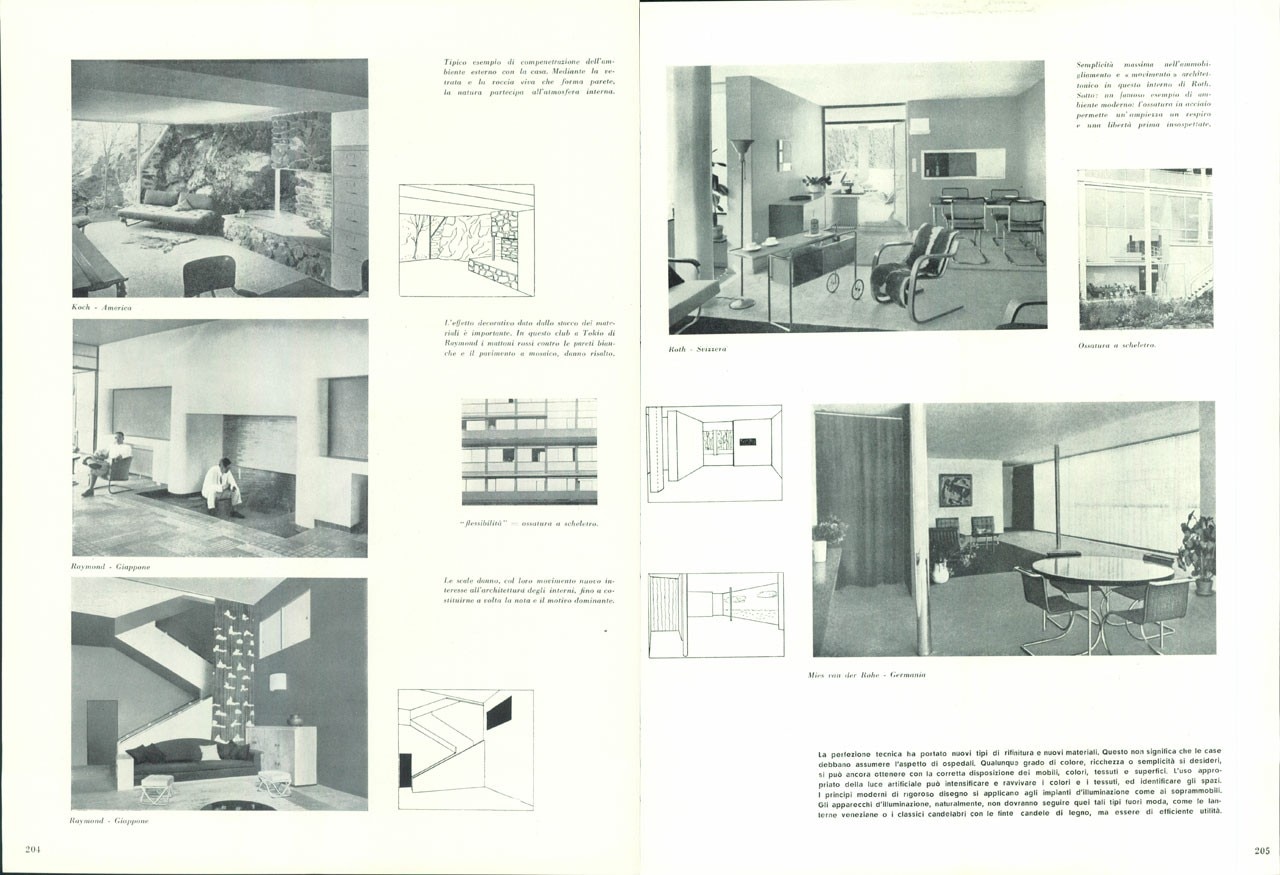
Clarity of design of the various parts is paramount, followed by very careful attention to each material. Three types of interiors can be taken into consideration:
1 With furniture already on the market
2 With standardised or mass-produced furniture
3 With custom-made furniture
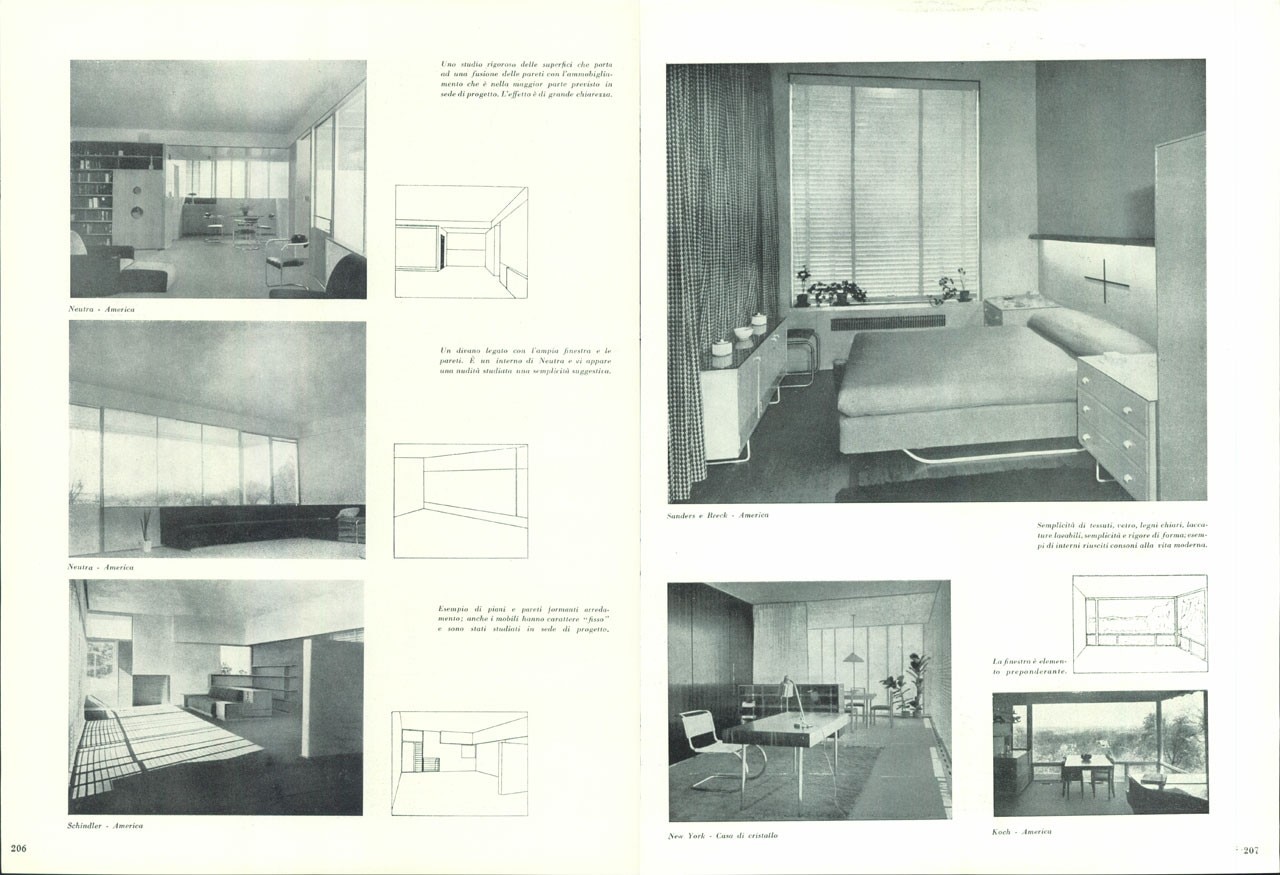
Although the standardisation of furniture and factories is desirable, the object is to obain a reasonable variety. We can learn a lesson from the Japanese, who attain to variety, in the use of equally sized straw mats as a basis for determining the form of rooms and the arrangement of furniture.
The fine craftsmanship that flourished in a different epoch has been replaced by machinery. Experience has shown that imitative artistic design causes wastage in production costs. A machine could clad its products with new aesthetic qualities. Architects and designers from all countries have designed exclusively for the potential offered by machinery in terms of aesthetics and economy. But both these objectives, economy and appearance, entail simplicity of form and a fine finish. Consequently, an artistic expression is burgeoning in industry, which architects can use to their advanatge.
This means a new richness of materials: plastics, glossy metals, unalterable alloys, glass, fabrics. The furnishing and designing of interiors can benefit from the new technology and new materials, starting from a principle of rigorous choice.
The appropriate use of materials and the effect of their colour can be of great help in the subdivision of restricted spaces. Thus the choice of flooring is of primary importance in the creation of a particular atmosphere and aesthetic effect. An amorphous flooring to be partially covered with traditional carpets can today be substituted by floors in rubber, cork, linoleum, wood fibres, small stone tiles, magnesite, etc, using the new types marketed in recent years. The choice will depend on the purpose of each interior, on the general layout of their spaces, their furniture, and the desired degree of colour, simplicity or richness.
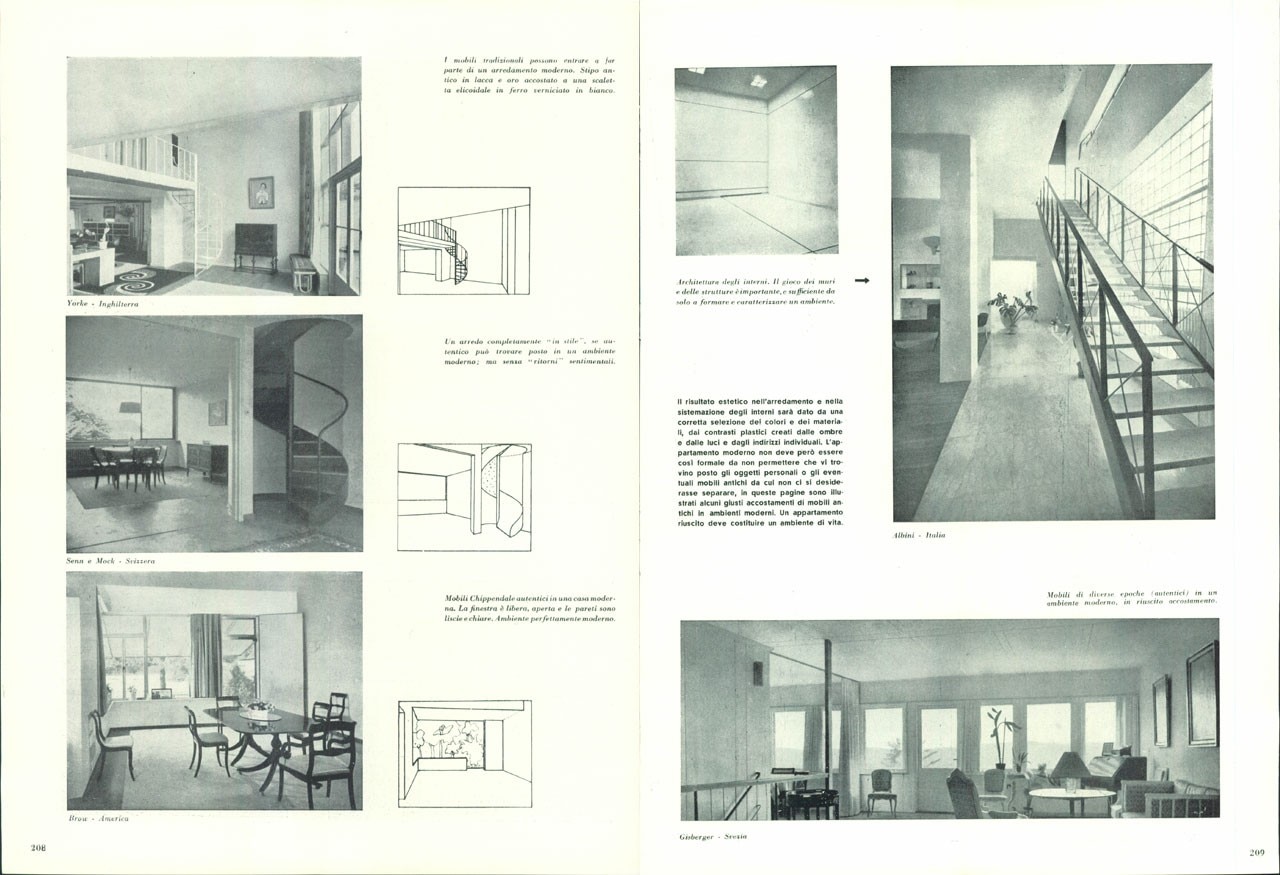
The walls, and especially the ceilings, including areas interrupted by one or more rooms, can be soundproofed by using sound-absorbent plaster or stone or other such materials. Ceiling or wall finishes obtained not only by plastering and the usual wallpapering, but by using new materials recently developed by industry, must be accompanied by a scrupulous study of artificial lighting obtainable by direct or indirect means. Doors and frames in general are no longer accessories to be decorated with stucco-work or other ornaments but can be made interesting by the application of colour to match the interior’s basic range.
Windows are of great importance in contributing to create an atmosphere. By their breadth they offer an extension into the outside world and its nature and environment. Horizontal windows are the best suited to a greater panoramic extension. Leafed or sliding doors, where terraces exist, can separate the interior from the exterior; and daylight can be controlled by the use of curtains or shutters.
These, then, are the starting points for a modern criterion of interior design and furniture. The illustrations chosen to accompany this text reflect a desire to make known some of the results recently achieved by architects worldwide. The examples reproduced cover roughly the past fifteen years.

